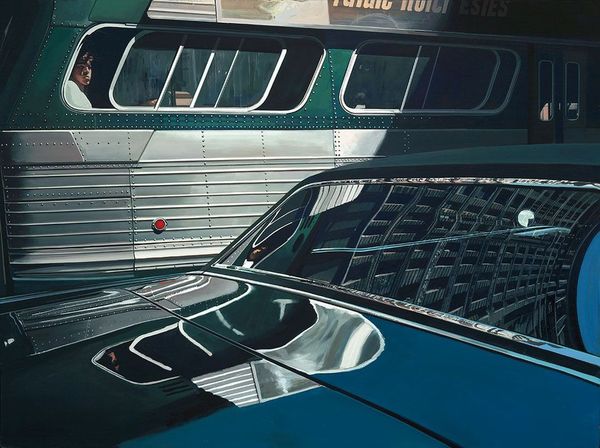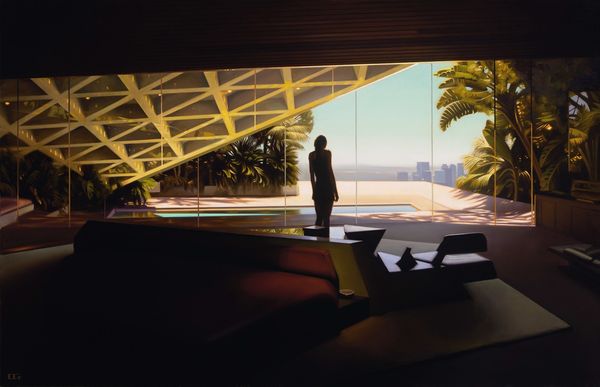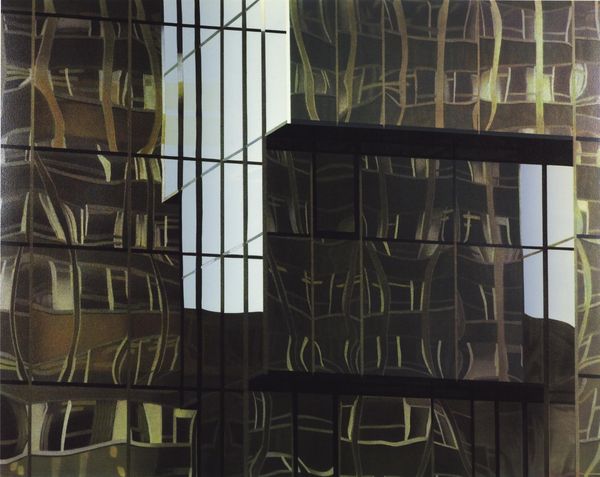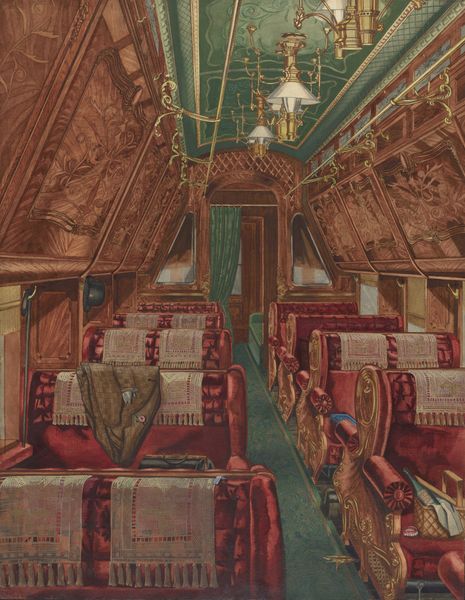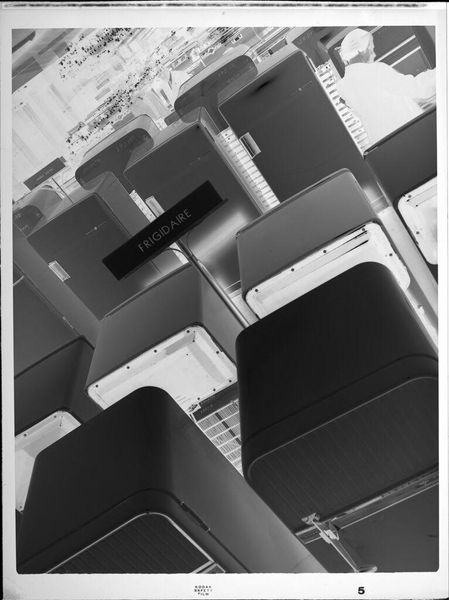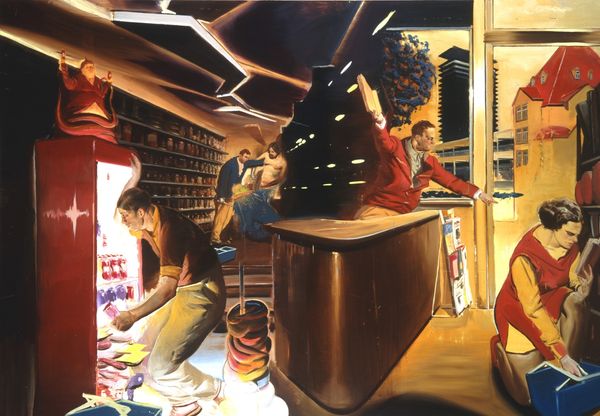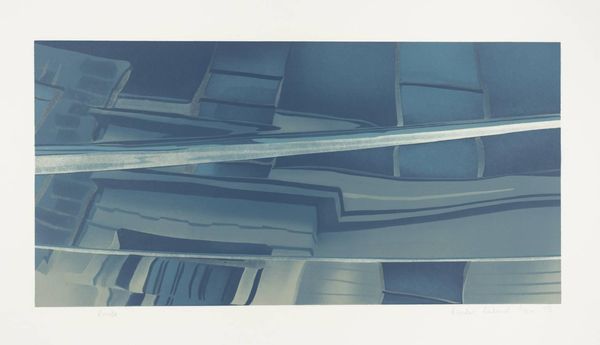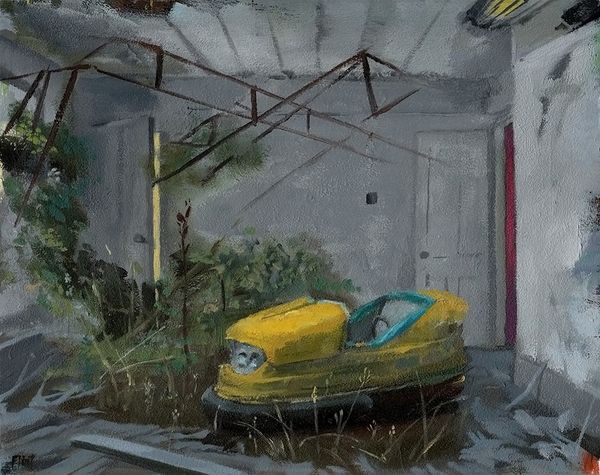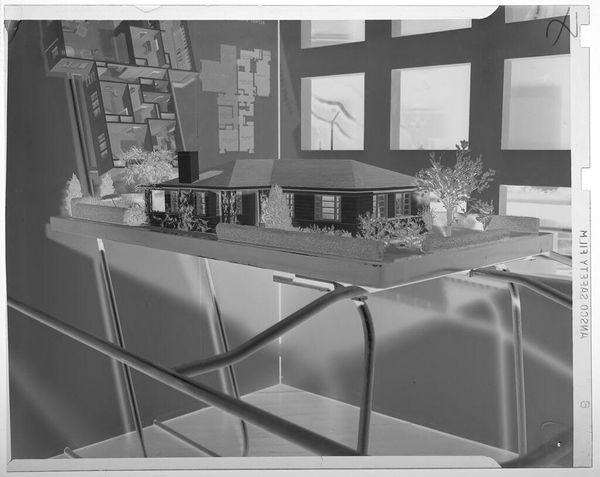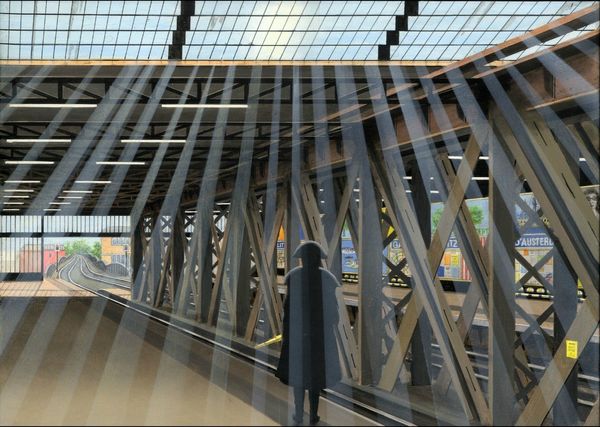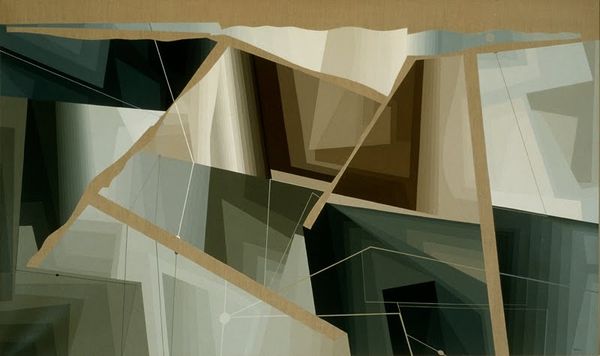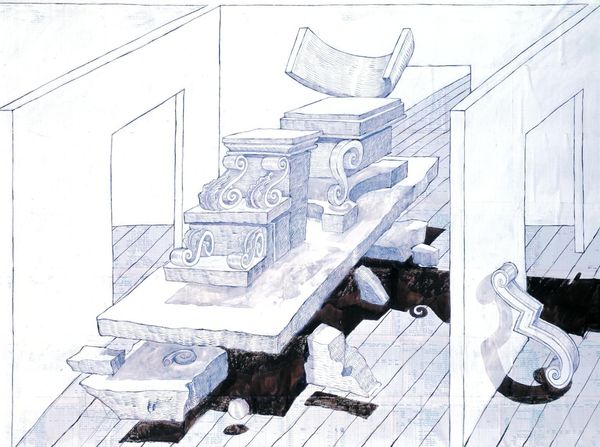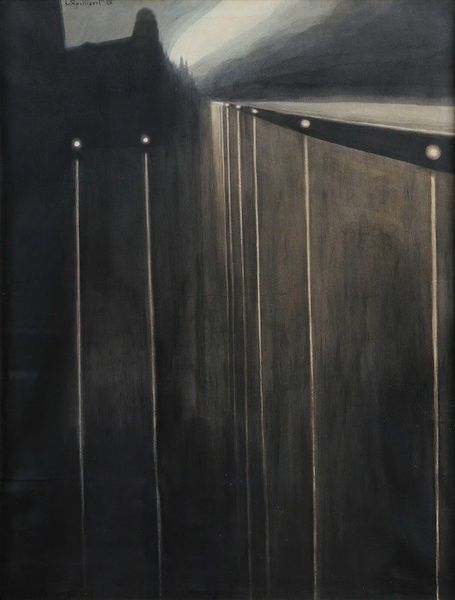
painting
#
painting
#
perspective
#
cityscape
#
modernism
#
realism
Copyright: Richard Estes,Fair Use
Curator: Right, so here we have Richard Estes' "Escalator," a painting from 1970 currently held in a private collection. What strikes you when you first look at it? Editor: Initially, it’s the oppressive stillness, isn’t it? Even though the subject is something designed for constant motion, there's a tomb-like silence that echoes from it. And that ochre background - it almost feels like viewing the scene through sepia. Curator: It's photorealistic painting in a sense that Estes mirrors an exactitude in the portrayal. But in that reflection, you get an unreal perspective that almost ventures into surrealism. He presents an idealized urban landscape divorced from organic realities, like a futuristic tomb indeed. Editor: Absolutely. Escalators in our memory conjure up hustle and bustle. It has almost become a representation of fast modern living, a symbol that facilitates easy movement for millions. But this frozen depiction really transforms its perceived reality; they don't ascend. They are simply objects to behold. I feel it gives a strange significance to something often taken for granted, a focus on urban architecture. Curator: Exactly. If we examine the composition, that stark "V" shape emphasizes this feeling of descending into an urban chasm. It is designed as a reflection of speed. He's playing with that tension, trapping fleeting modernity in a meticulously-rendered oil painting. Escalators have always seemed to embody societal advancement through constant transit; here they seem almost sculptural. Editor: I see the perspective as having a quasi-religious dimension, perhaps as a gateway or entrance to somewhere entirely new and yet strangely sterile. The symbolism speaks of transitions and passage in many belief systems and myths. In Estes' work the escalators appear devoid of any true promise or hope of moving from one level to the other, one status to the next. Curator: That's beautifully articulated, and very true, its urban perspective removes itself from any particular urban context. Editor: Thinking about this artwork from its creation during 1970, and also keeping in mind its modernist association, gives me even more perspective. In that period there was optimism through modernization but also a feeling of dread for some. That may add another nuance to viewing it too. Thanks, Richard Estes. Curator: Exactly. Modern cities continue to develop, and as he portrayed then, it will be interesting how it relates in our future.
Comments
No comments
Be the first to comment and join the conversation on the ultimate creative platform.

